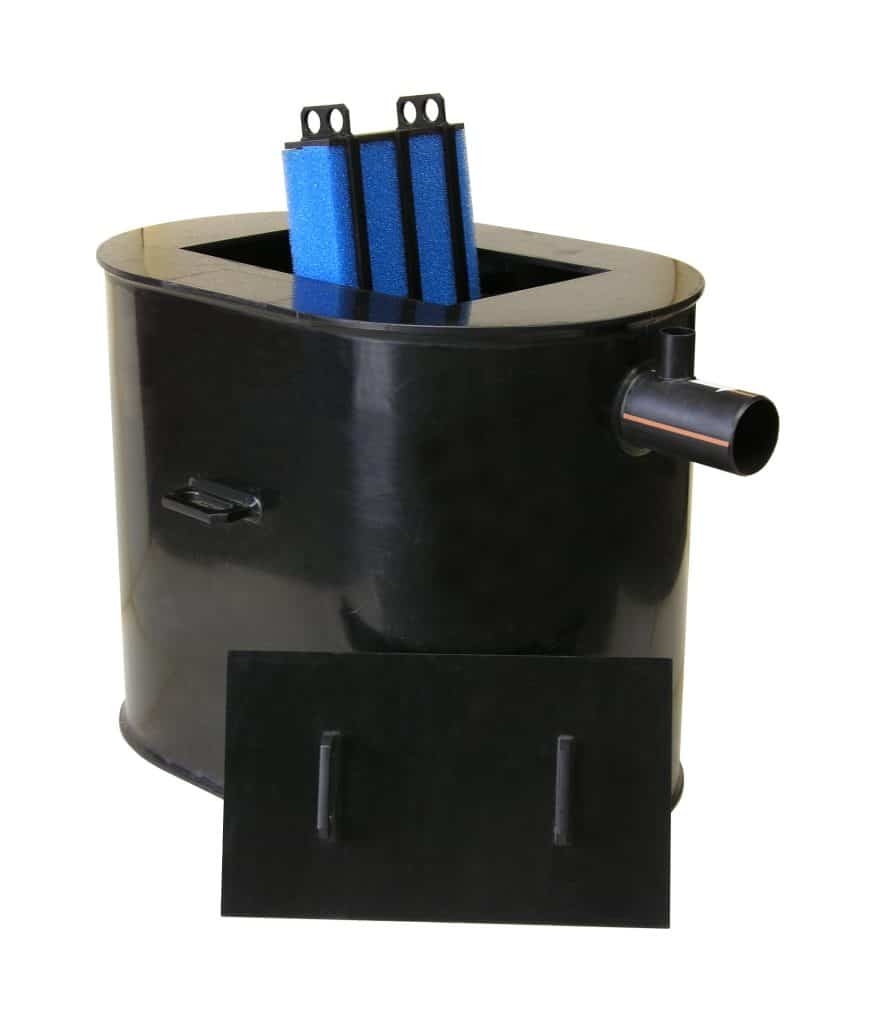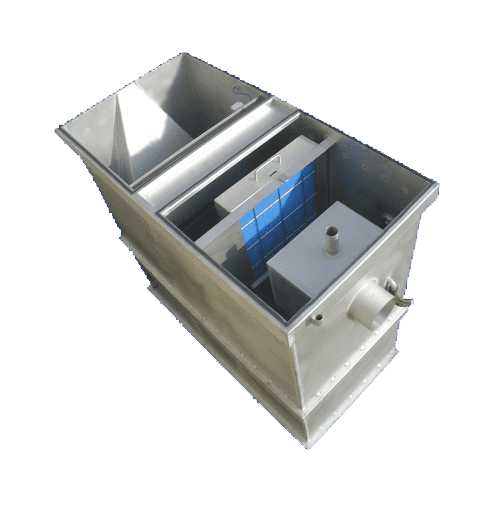Ever thought about How to Size an Above Ground OWS System? or how the size of an above ground Oil/Water Separator (OWS) affects work and the environment? Figuring out the right size for an OWS system is key for good stormwater management. It also helps meet environmental rules. Getting it wrong can cause problems, fines, and higher costs.
We’ll dive into the details of oil/water separator sizing. We’ll look at flow rates, types of liquids, and rules that matter. Freytech Inc.’s advanced coalescing tech is also a focus. It offers top-notch results for many industries. Knowing these points helps you design your system for the best results.
Key Takeaways
- Proper sizing of an OWS system enhances stormwater management.
- Flow rates can vary significantly across different OWS models.
- Environmental compliance requirements dictate crucial sizing criteria.
- Freytech Inc.’s coalescing technology sets new standards in separation efficiency.
- Different applications require tailored sizing solutions.
- Understanding the liquid types being treated is vital for effective OWS design.
Understanding Above Ground OWS Systems
Above Ground Oil/Water Separator (OWS) systems are key in separating oil from water. They are used in many industrial and commercial places. These systems follow strict EPA rules and help manage stormwater well.
Definition of OWS Systems
OWS systems remove oil and solids from water. They are crucial in places like gas stations and car repair shops. These areas often face oil pollution risks.
Importance of Sizing
Getting the size right for oil tanks and OWS systems is crucial. The wrong size can cause problems, letting contaminants slip through. This can lead to EPA rule breaks. In Arkansas, OWS technology is used to meet strict water standards.
Common Applications
OWS systems are used in many fields. They help vehicle service stations, industrial sites, and oil facilities meet environmental rules. This technology helps with compliance and supports green practices.
Key Factors in Sizing Your OWS System
Choosing the right size for an oil/water separator (OWS) is key for good wastewater treatment. It’s especially important in industrial settings. Several factors help decide the best size and how well it works.
Flow Rate Considerations
Knowing the flow rate is crucial. It tells us how much liquid will go into the OWS. High shear pumps can mix oil and water too much, making separation hard.
To get the best results, pump oily water slowly. Aim for less than 20% of the separator’s capacity. Also, make sure the flow is smooth and not too fast, with a Reynolds number under 500.
Liquid Types and Concentrations
The kinds and amounts of liquids matter a lot. Different oils, like diesel and motor oil, need special attention. Emulsified oily water might need a bigger separator with more time for separation.
Freytech Inc. technologies can handle many contaminants well. This ensures the water meets discharge limits.
Environmental Regulations
Following environmental rules is a must when picking an OWS size. It’s important to meet standards like 10 PPM discharge limits. This avoids fines and keeps operations running smoothly.
The separator’s design must remove almost all free droplets. This ensures the water quality meets legal standards. Knowing these rules helps pick the best treatment systems and keeps them working well over time.
North American Hydrocarbon Discharge Limits
In North America, rules for hydrocarbon discharge are key to keeping water clean. The 10 PPM standard is a key goal for many industries. It ensures that water discharged meets environmental standards. This is crucial for getting approval and protecting nature.
Overview of 10 PPM Standard
The 10 PPM standard is set by environmental groups. It says that water discharged can’t have more than 10 parts of hydrocarbons per million parts of water. This rule helps keep water bodies clean, especially for industries that handle pollutants.
Following these rules is important for businesses. It helps them keep their licenses and avoid big fines.
Importance of Compliance
Following the 10 PPM standard shows a company cares about the environment. Companies that don’t comply face fines and harm to their reputation. They also have a moral duty to reduce their environmental impact.
This can build trust in the community and better relationships with stakeholders.
Role of Separation Efficiency
How well a system separates hydrocarbons is very important. Companies like Freytech Inc. have made big strides in this area. Their technology can separate hydrocarbons at a 5 PPM level, which is better than the 10 PPM standard.
This technology is key in fighting pollution. It helps make water cleaner for people and animals.
Freytech Inc.’s Enhanced Coalescing Technology
Freytech Inc. is a leader in advanced separation technology for above ground OWS systems. Their enhanced coalescing technology is a game-changer. It uses advanced methods to separate oil from water effectively. This meets strict discharge standards, perfect for industries needing top-notch waste management.
Overview of Technology
The heart of Freytech Inc.’s work is their enhanced coalescing technology. This system can achieve separation efficiencies as low as 0.1 PPM. That’s far below the North American limit of 10 PPM. Their systems are designed for various needs, keeping oil levels in treated water very low.
Benefits of Enhanced Coalescing
Using Freytech Inc.’s technology leads to cleaner discharges, reducing environmental harm. Their equipment handles different hydrocarbons like motor oil and gasoline. This makes it easy for businesses to follow environmental rules and meet government standards.
Case Studies of Effectiveness
Real-world examples show how well Freytech Inc.’s technology works. Companies have cut oil discharge levels to 5 PPM with their systems. These successes highlight the technology’s role in protecting the environment and improving operations.
Sizing Your OWS Based on Application
Choosing the right size for an oil/water separator (OWS) depends on the application. Different settings have different needs. This means finding the best fit for each situation to meet both efficiency and rules.
Industrial vs. Commercial Applications
Industrial places need big oil/water separators because they handle a lot of contaminants. Commercial spots might not spill oil as much but still need reliable systems to keep the environment clean. Designing systems for above ground use helps tailor them to each place’s needs, covering both high and low flow rates.
Specifics for Oil and Gas Industries
The oil and gas world has strict rules for oil/water separators. They must meet very low standards, like 5 parts per million (PPM), to follow environmental laws. New technologies help separate oil and water well, especially for fuels like diesel and motor oil. The design must consider the type of contaminants and the separator’s ability to handle spills, ensuring it meets industry standards.
Unique Needs for Different Sectors
Every field has its own needs for treating wastewater and separating oil and water. For example, places like transportation centers need fast systems for vehicle runoff. Manufacturing sites require solutions for different types of wastewater. The design of above ground systems must focus on preventing spills and managing wastewater discharge, meeting all needs and rules.

Calculating Flow Rate for OWS Systems
Getting the flow rate right is key for oil-water separator (OWS) systems. Knowing how to figure out peak and average flow rates is vital. It helps keep industrial facility drainage and stormwater management systems running smoothly.
Determining Peak Flow Rates
Peak flow rates show the highest water volume an OWS needs to handle briefly. This usually happens during short, intense periods, like in industrial processes. Things like equipment schedules, production cycles, and rain can affect these rates.
For example, oil production facilities might see higher peak flows during clean-outs. This is why their OWS systems need to be strong. They must handle the extra water without overflowing and meet environmental rules.
Assessing Average Flow Rates
Average flow rates are based on a facility’s regular operations. They help figure out how well an OWS system works. By looking at steady flow data, companies can make sure their OWS systems work right.
This means they can separate and hold oil while managing wastewater well.
Seasonal Adjustments
Seasonal changes can really change flow rates, especially in areas with lots of rain or snowmelt. OWS systems need to be flexible to handle these changes all year. For example, more rain can make the flow rate go up in stormwater systems.
This means the OWS system might need to work harder to manage the water. It’s important to adjust its capacity to stop untreated water from being released.
Ensuring Optimal Separation Efficiency
Getting the best separation is key for oil water separator (OWS) systems. Knowing the difference between 5 PPM and 0.1 PPM is important. New technologies, like coalescing systems, help merge small oil droplets for easier removal.
Understanding 5 PPM vs. 0.1 PPM
Advanced OWS tech ensures water quality of 5 PPM or better. Freytech Inc.’s systems go even further, reaching 0.1 PPM. This means even tiny amounts of oil are removed, making the water cleaner.
Choosing the Right Separator Package
Choosing the right package depends on flow rates and needs. Freytech’s EcoLine A OWS keeps water quality at 5 PPM. The Multi-Pack™ system adjusts to different needs with removable plates.
There are options for all, from cylindrical for moderate flow to rectangular for large volumes. Each design is made to handle oily water efficiently.
Maintenance for Consistent Performance
Regular maintenance keeps OWS systems running well. This includes checking the system, watching for oil buildup, and cleaning parts when needed. Without it, efficiency drops and so do standards.
Keeping systems in top shape ensures they work well and meet environmental rules.
Contact Freytech Inc. for Expert Assistance
Looking for solutions to meet strict environmental rules? Freytech Inc. is here to help. We offer expert advice for your wastewater treatment needs. Our team can guide you in choosing the right technology for your industrial or auto facility.
Our technology meets North American standards for discharge limits. This makes us a leader in the field.
Phone Consultation at +1 (305) 372-1104
Call us at +1 (305) 372-1104 for a personalized talk. Our experts will show you how our coalescing technology works. It helps your facility meet rules while keeping operations smooth.
We know every facility is different. That’s why our solutions are made just for you.
Commitment to a Cleaner Environment
At Freytech Inc., we care about a cleaner world. Our systems manage wastewater responsibly. They help your business meet rules and protect the environment.
Join us in using advanced technology for a greener future. Move towards compliance and sustainability today.










